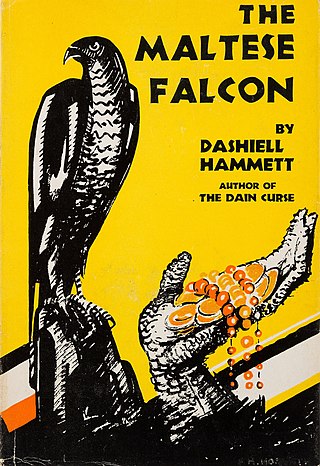
The Maltese Falcon is a 1930 detective novel by American writer Dashiell Hammett, originally serialized in the magazine Black Mask beginning with the September 1929 issue. The story is told entirely in external third-person narrative; there is no description whatsoever of any character's thoughts or feelings, only what they say and do, and how they look. The novel has been adapted several times for the cinema.
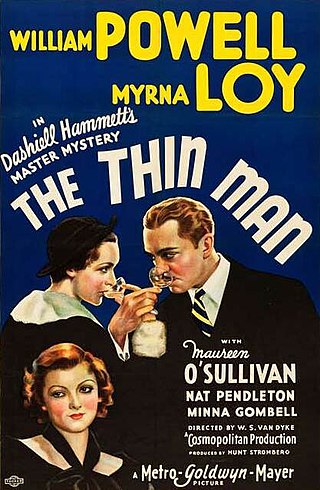
The Thin Man is a 1934 American pre-Code comedy-mystery film directed by W. S. Van Dyke and based on the 1934 novel of the same name by Dashiell Hammett. The film stars William Powell and Myrna Loy as Nick and Nora Charles, a leisure-class couple who enjoy copious drinking and flirtatious banter. Nick is a retired private detective who left his very successful career when he married Nora, a wealthy heiress accustomed to high society. Their wire-haired fox terrier Asta was played by canine actor Skippy. In 1997, the film was added to the United States National Film Registry having been deemed "culturally, historically, or aesthetically significant".
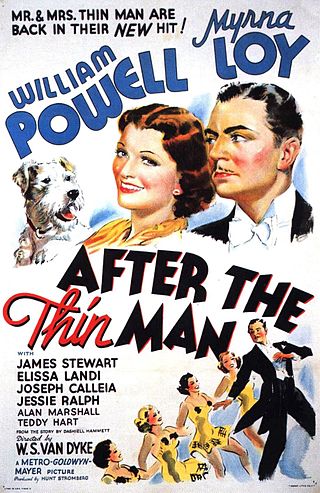
After the Thin Man is a 1936 American murder mystery comedy film directed by W. S. Van Dyke and starring William Powell, Myrna Loy and James Stewart. A sequel to the 1934 feature The Thin Man, the film presents Powell and Loy as Dashiell Hammett's characters Nick and Nora Charles. The film also features Elissa Landi, Joseph Calleia, Jessie Ralph, Alan Marshal and Penny Singleton.

Another Thin Man is a 1939 American detective film directed by W. S. Van Dyke, the third of six in the Thin Man series. It again stars William Powell and Myrna Loy as Nick and Nora Charles and is based on Dashiell Hammett's Continental Op story "The Farewell Murder". The Charles' son Nicky Jr. is introduced for the first time. The cast includes their terrier Asta, Virginia Grey, Otto Kruger, C. Aubrey Smith, Ruth Hussey, Nat Pendleton, Patric Knowles, Sheldon Leonard, Tom Neal, Phyllis Gordon and Marjorie Main. Shemp Howard appears in an uncredited role as Wacky.

Shadow of the Thin Man is the fourth of six The Thin Man murder mystery comedy films. It was released by MGM in 1941 and was directed by W. S. Van Dyke. It stars William Powell and Myrna Loy as Nick and Nora Charles. Also, in this film their son Nick Jr. is old enough to figure in the comic subplot. Other cast members include Donna Reed and Barry Nelson. This was one of three films in which Stella Adler appeared.

Song of the Thin Man is a 1947 murder mystery-comedy directed by Edward Buzzell. The sixth and final film in MGM's Thin Man series, starring William Powell and Myrna Loy as Nick and Nora Charles, characters created by Dashiell Hammett. Nick Jr. is played by Dean Stockwell. Phillip Reed, Keenan Wynn, Gloria Grahame, and Jayne Meadows are featured in this story set in the world of nightclub musicians.

The Thin Man Goes Home is a 1945 comedy-mystery film directed by Richard Thorpe. It is the fifth of the six Thin Man films starring William Powell and Myrna Loy as Dashiell Hammett's dapper ex-private detective Nick Charles and his wife Nora. This entry in The Thin Man series was the first not directed by W.S. Van Dyke, who had died in 1943.

Samuel Dashiell Hammett was an American writer of hard-boiled detective novels and short stories. He was also a screenwriter and political activist. Among the enduring characters he created are Sam Spade, Nick and Nora Charles, The Continental Op and the comic strip character Secret Agent X-9.
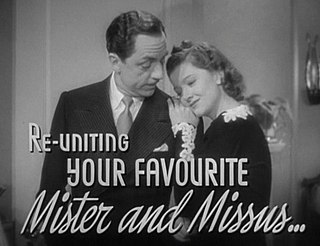
Nick and Nora Charles are fictional characters created by Dashiell Hammett in his novel The Thin Man. The characters were later adapted for film in a series of films between 1934 and 1947; for radio from 1941 to 1950; for television from 1957 through 1959; as a Broadway musical in 1991; and as a stage play in 2009.
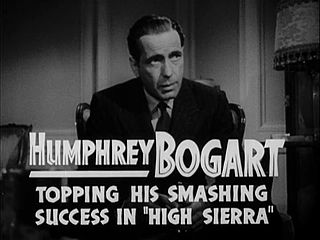
Sam Spade is a fictional character and the protagonist of Dashiell Hammett's 1930 novel The Maltese Falcon. Spade also appeared in four lesser-known short stories by Hammett.
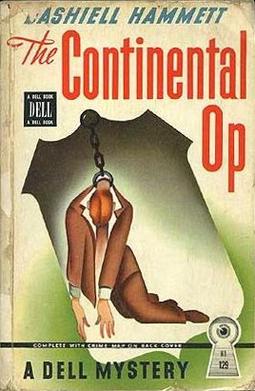
The Continental Op is a fictional character created by Dashiell Hammett. He is a private investigator employed as an operative of the Continental Detective Agency's San Francisco office. The stories are all told in the first person and his name is never given.
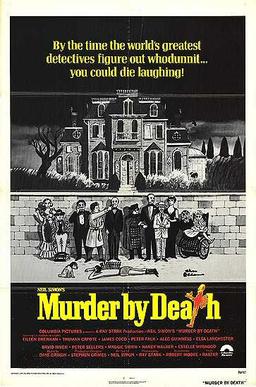
Murder by Death is a 1976 American comedy mystery film directed by Robert Moore and written by Neil Simon. The film stars Eileen Brennan, Truman Capote, James Coco, Peter Falk, Alec Guinness, Elsa Lanchester, David Niven, Peter Sellers, Maggie Smith, Nancy Walker, and Estelle Winwood.

Frances Goodrich was an American actress, dramatist, and screenwriter, best known for her collaborations with her partner and husband Albert Hackett. She received the Pulitzer Prize for Drama with her husband in 1956 for The Diary of Anne Frank which had premiered the previous year.

The Glass Key is a novel by American writer Dashiell Hammett. First published as a serial in Black Mask magazine in 1930, it then was collected in 1931. It tells the story of a gambler and racketeer, Ned Beaumont, whose devotion to Paul Madvig, a crooked political boss, leads him to investigate the murder of a local senator's son as a potential gang war brews. Hammett dedicated the novel to his onetime lover Nell Martin.
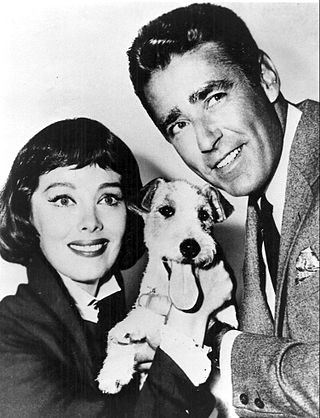
The Thin Man is a half-hour weekly television series based on the mystery novel The Thin Man (1933) by Dashiell Hammett. The 72 episodes were produced by MGM Television and broadcast by NBC for two seasons from 1957–1959 on Friday evening. It was the first TV series produced by MGM.
The Thin Man is a series of popular films featuring detective characters Nick and Nora Charles, of which the first was based on the novel of the same name by Dashiell Hammett.
The Adventures of the Thin Man radio series, initially starring Les Damon, was broadcast on all four major radio networks during the years 1941 to 1950. Claudia Morgan had the female lead role of Nora Charles throughout the program's entire nine-year run. The radio series was modeled after the film series which was based on the 1934 Dashiell Hammett novel.

The Glass Key is a 1942 American crime drama based on the 1931 novel of the same name by Dashiell Hammett. The picture was directed by Stuart Heisler starring Brian Donlevy, Veronica Lake and Alan Ladd. A successful earlier film version starring George Raft in Ladd's role had been released in 1935. The 1942 version's supporting cast features William Bendix, Bonita Granville, Richard Denning and Joseph Calleia.

William Horatio Powell was an American actor. A major star at Metro-Goldwyn-Mayer, he was paired with Myrna Loy in 14 films, including the Thin Man series based on the Nick and Nora Charles characters created by Dashiell Hammett. Powell was nominated for the Academy Award for Best Actor three times: for The Thin Man (1934), My Man Godfrey (1936), and Life with Father (1947).
Roadhouse Nights is a 1930 American Pre-Code gangster film. A number of sources including Sally Cline in her book Dashiell Hammett Man of Mystery claim it is based on the classic novel Red Harvest written by Dashiell Hammett. However the credits of the film itself say only "An Original Screenplay by Ben Hecht." Hammett receives no mention at all.
















